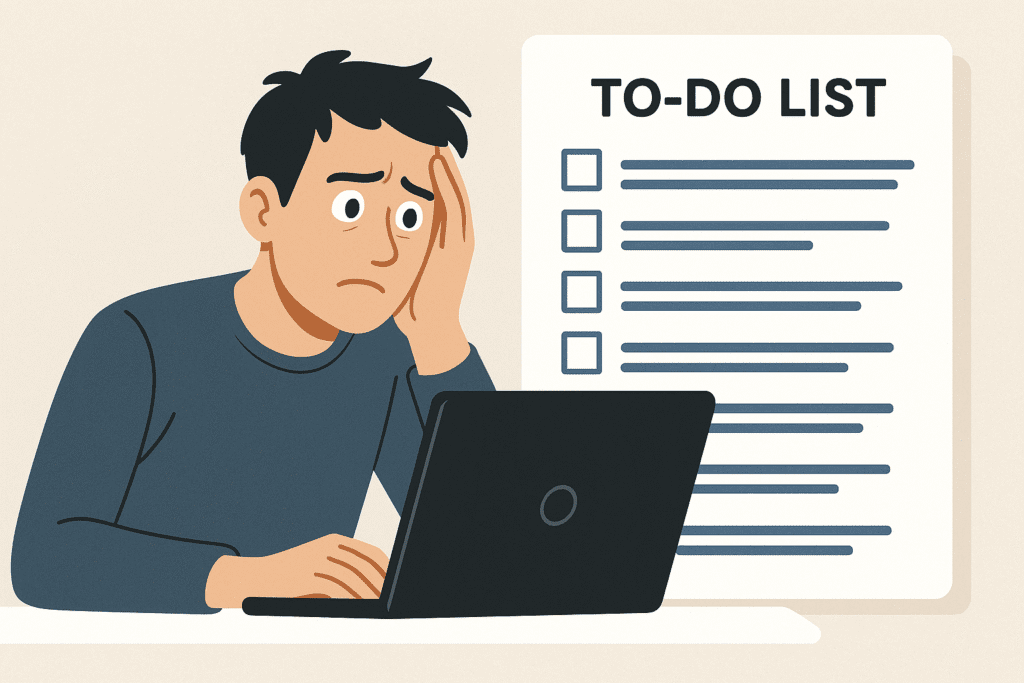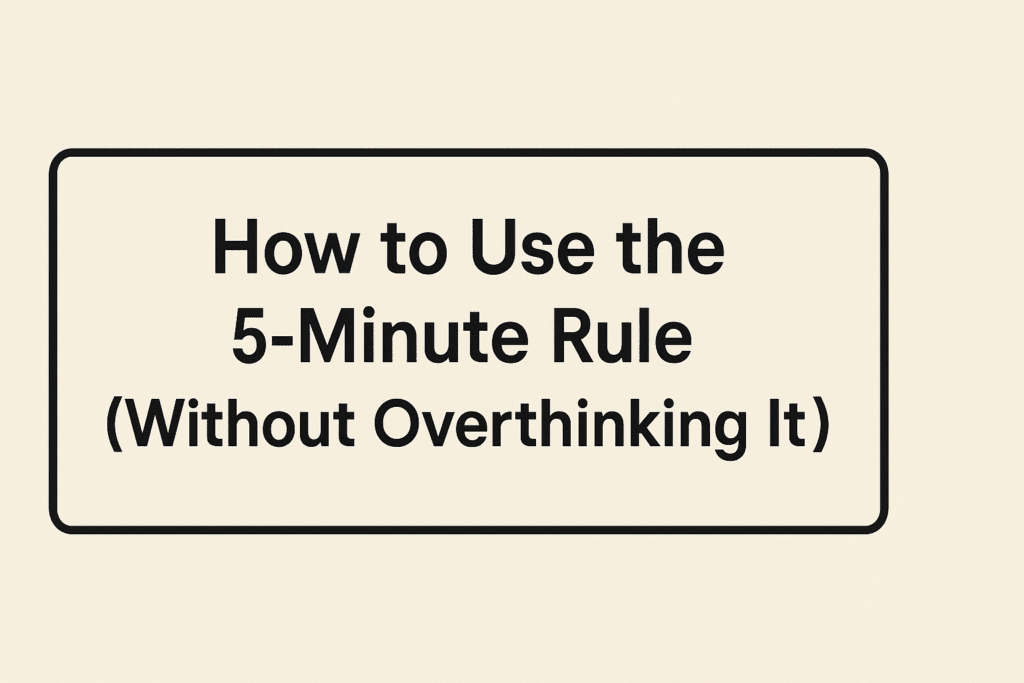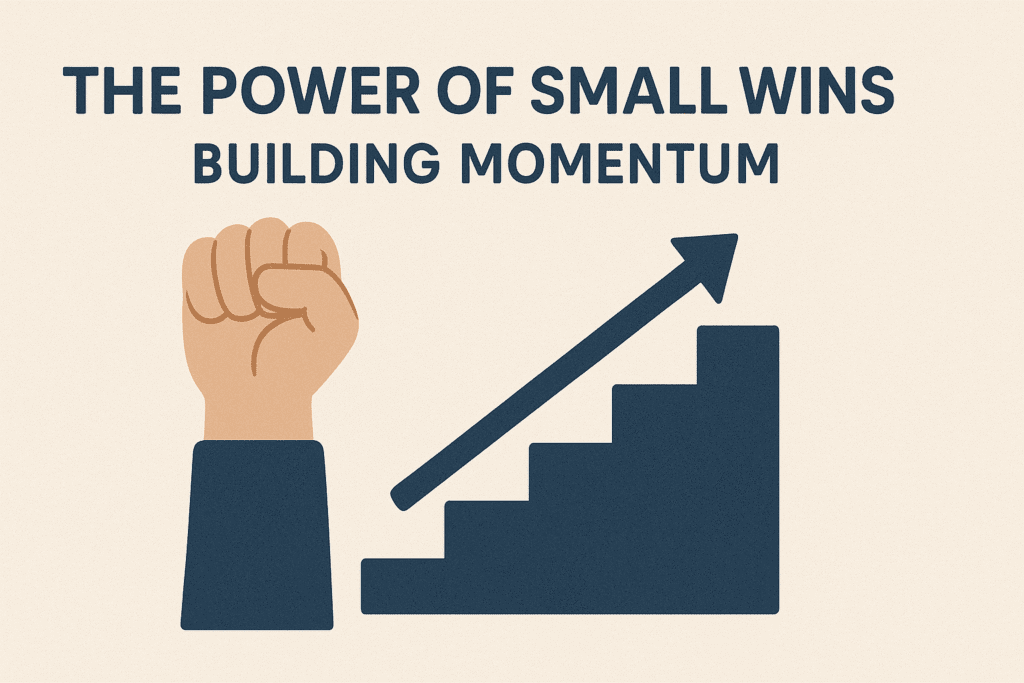Introduction

Most people don’t lack time — they lack momentum.
It’s not the 2-hour tasks that stop you.
It’s the first 2 minutes.
You scroll, delay, overthink — and tell yourself you’ll “start in a bit.”
But that “bit” becomes days, weeks… and nothing gets done.
Here’s the truth: your brain isn’t wired for motivation.
It’s wired for survival.
And that means avoiding discomfort — even when it ruins your goals.
That’s where the 5-Minute Rule flips the game.
Simple. Immediate. Brain-rewiring.
This isn’t another “hack.”
It’s a proven method backed by psychology that gets your body moving before your brain has time to make excuses.
In this blog, you’ll learn:
- What the 5-Minute Rule actually is
- Why it works even when you feel lazy or stuck
- And how to use it to reprogram your daily habits, productivity, and even your self-image
Let’s break the cycle — and start building a life where action becomes automatic.
Your Brain is Built to Avoid Effort (But That’s Not a Flaw)

Your brain has one job: keep you alive.
And for most of human history, that meant avoiding unnecessary energy burn.
Hunting, running, building — everything had a cost. So the brain evolved a system:
“If it’s hard and not urgent — skip it.”
Fast forward to today:
- You’re not running from lions.
- But your brain still treats every uncomfortable task like a threat.
- That email? That workout? That business idea?
Your brain says, “Too much effort. Let’s scroll instead.”
It’s called cognitive friction — the invisible weight you feel before starting a task.
And it’s why we procrastinate, delay, and overthink.
But here’s the hack:
The brain resists the start, not the task.
Once you begin, your mind flips. Momentum kicks in.
This is where the 5-Minute Rule becomes a weapon.
It bypasses your mental resistance and activates motion before excuses take over.
How to Use the 5-Minute Rule (Without Overthinking It)

Here’s the deal:
The 5-Minute Rule isn’t just a motivational quote. It’s a tool. A trigger. A brain rewire.
Step-by-step breakdown:
- Pick the task you’re avoiding.
Not the hardest one — just the one that’s been sitting in your mind like mental clutter. - Set a timer for 5 minutes. That’s it.
You’re not committing to an hour. Not even 10 minutes. Just 5.
Your brain doesn’t panic at 5. It lets you start. - Tell yourself: “I only have to do this for 5 minutes.”
You’ve now removed pressure, expectation, and perfectionism. You’ve tricked your resistance. - Start. Not perfectly — just start.
Send the email. Open the document. Do 10 push-ups.
Most times, once you begin, you won’t stop. That’s momentum. - If you stop after 5 minutes — that’s still a win.
You moved. You broke the pattern. You proved you’re in control.
This rule works whether you’re trying to start a business, clean your room, or read more books.
It’s not about productivity hacks — it’s about identity.
You’re becoming someone who takes action. And your brain is watching.
The Neuroscience Behind the 5-Minute Rule
This isn’t just a motivational gimmick.
There’s brain science at play — and here’s why it hits hard:
🧠 1. It Disarms the Amygdala (Your Inner Alarm System)
The amygdala detects threat — including the “threat” of discomfort, failure, or embarrassment.
Big tasks = threat → delay.
But 5 minutes? That’s not a threat.
It bypasses the brain’s panic button and says:
“Relax. We’re not doing anything hard. Just dipping a toe in.”
🔁 2. It Creates a Dopamine Loop
Action → completion → reward.
Even a small task done in 5 minutes releases dopamine — your brain’s “win” chemical.
That hit rewires your brain to seek action, not avoid it.
🔓 3. It Breaks the Overthinking Cycle
Thinking too much is the enemy of action.
The 5-minute rule gives your brain less time to negotiate, excuse, or analyze.
You’re not thinking — you’re moving. And that’s where the shift happens.
Real productivity isn’t about forcing motivation — it’s about creating momentum.
5 Minutes Becomes 50 — Here’s Why
Most people think,
“Okay, I’ll do it for just 5 minutes…”
And then they look up an hour later — still going.
That’s not magic. That’s psychological inertia.
🔄 1. The “Starting is the Hardest Part” Truth
Once the brain has started something, it wants to finish it — it hates loose ends.
This is called the Zeigarnik Effect:
Unfinished tasks stay alive in your mind until they’re completed.
So starting small actually tricks your brain into wanting to continue.
💪 2. You Build Momentum, Not Motivation
Motivation is unpredictable.
But momentum? That’s physics.
Small action → bigger energy → sustained flow.
This is why 5 minutes often turns into full-on productivity mode.
🧩 3. It Rewires Identity
Every time you follow through — even just 5 minutes — you’re reinforcing the identity of a doer.
Not someone who “tries” or “hopes.”
But someone who acts.
That’s the real cheat code: You stop negotiating with yourself — and start moving like it’s default.
The Long-Term Reprogramming Effect
You don’t rise to the level of your goals.
You fall to the level of your systems.
The 5 Minute Rule becomes one of those systems.
🧠 1. Neuroplasticity at Work
Every time you override resistance with action, your brain forms new neural pathways.
Over time, the “default” becomes:
“I take action — even when I don’t feel like it.”
You’re not just doing tasks — you’re building a new mental operating system.
🔁 2. Desensitization to Resistance
Procrastination isn’t laziness.
It’s emotional avoidance.
But when you repeatedly face discomfort for just 5 minutes, you become desensitized to the fear loop.
What scared you before? Becomes routine.
The task that felt heavy? Loses its weight.
🚫 3. Kills Perfectionism
Perfectionism paralyzes.
But 5 minutes? There’s no room for “perfect” — only done.
This micro-start approach breaks the toxic loop of:
“If I can’t do it all perfectly, I won’t start at all.”
Overcoming Mental Barriers with the 5-Minute Rule
One of the biggest challenges we face when trying to accomplish tasks, especially ones that we’ve been avoiding, is the mental barrier of overwhelm. Whether it’s because the task seems too big, too boring, or too difficult, our minds create resistance. This resistance often leads to procrastination, leaving us stuck in a cycle of avoiding the task altogether.
The beauty of the 5-Minute Rule lies in its ability to break down this mental barrier. It simplifies everything to a small, manageable chunk of time. By committing to just five minutes, you’re telling yourself that you don’t need to complete the task — you just need to start it. This shift in mindset makes it far easier to begin, as the pressure of perfection or completing the entire task is taken off your shoulders.
How the Rule Works in Real Life
Let’s say you’re working on a big report for work, but the idea of sitting down and writing for hours feels daunting. Instead of thinking about the entire task, tell yourself, “I will work on this for just five minutes.” In those five minutes, you might end up writing a couple of paragraphs, brainstorming, or organizing your thoughts. Once that time is up, you’ll likely find that you’ve gained some momentum and will want to continue working beyond the five minutes.
This is the crux of the 5-Minute Rule: it builds momentum without requiring you to commit fully right away. By starting small, you ease your mind and lower the resistance, which gradually turns into action. Often, the hardest part is simply getting started.
Building Self-Discipline with Consistent Action
When you apply the 5-Minute Rule daily, you begin to develop a routine of consistent action. The key to building long-term habits is consistency. By committing to a few minutes each day, you train your brain to associate action with success. Over time, the need for motivation decreases, and discipline takes its place.
As your brain starts associating small efforts with positive outcomes, you will naturally begin to apply the same principle to other areas of your life. Whether it’s exercising, learning a new skill, or working on a passion project, starting with five minutes opens the door to progress.
The Snowball Effect of Action
The beauty of this technique is that it doesn’t just help you overcome the initial mental barrier; it also sets you on a path of consistent action. Each small step, each tiny moment of effort, builds upon the last. This is where the snowball effect comes in. The more you act, the more motivated you feel, and the less resistance you experience.
By continually taking action, no matter how small, you create a habit of progress. The 5-Minute Rule doesn’t just help you get started; it also helps you finish. The more frequently you use it, the less effort it takes to keep going. It’s the key to unlocking your productivity without relying on external motivation.
The Power of Small Wins: Building Momentum

It’s not about achieving huge, overwhelming goals overnight. It’s about stacking small wins on top of each other. Each 5-minute session, no matter how small the task, adds up. Over time, these small victories compound into real change.
Think about it:
- Answering one email might seem trivial, but that’s one less thing weighing on your mind.
- Doing a single push-up might feel like nothing, but it’s progress toward building a healthier lifestyle.
These small wins add up. And when you start to see how even the smallest actions lead to forward momentum, your brain rewires itself. What once felt difficult becomes easier.
Momentum feeds on success. The more you start, the more you’ll want to continue.
The 5-Minute Rule: Reprogramming Your Brain for Action
The key to mastering momentum is breaking through your brain’s natural resistance. The 5-Minute Rule, as we’ve discussed, is an easy and effective way to trick your mind into action. But here’s the real power — it reprograms the brain for long-term success.
When you follow the 5-Minute Rule consistently, you start seeing how small actions lead to bigger ones. Over time, you’ll notice a shift: What once felt like a huge hurdle becomes second nature.
That mental block that used to keep you from getting started? It starts to lose its power. Your brain, which once resisted action, now welcomes it. And every time you win that small battle, you reinforce your new identity as someone who takes action.
The Neuroscience Behind the 5-Minute Rule
It’s not just some “motivational” tip — the 5-Minute Rule is rooted in real neuroscience. Our brains are wired to avoid discomfort, as we’ve discussed. The brain doesn’t like starting new tasks because it perceives them as a threat. It’s energy-consuming. But once you begin, the brain starts releasing dopamine, a neurotransmitter that makes you feel good and motivates you to continue.
This dopamine release is essential in the process of habit formation. The more you repeat the cycle of starting small, experiencing that dopamine hit, and then moving on to bigger tasks, the more your brain learns to associate action with reward.
What does this mean for you? Simple. You begin to rewire your brain. The longer you practice this, the more your mind begins to understand that action leads to reward, not pain.
Building Consistency: The Real Key to Success
The true power of the 5-Minute Rule isn’t about completing tasks in five minutes. It’s about building consistency. Small wins, completed daily, make up the foundation of your success.
Think about top performers in any field: they don’t achieve greatness in one go. They build it over time. Consistency, not perfection, is what leads to growth.
Here’s how you can use the 5-Minute Rule to establish consistency in your life:
- Commit to your task every day. You don’t have to commit hours. Just 5 minutes. You’ll soon see that five minutes is enough to get started — and once you’re in motion, you’ll want to keep going.
- Focus on momentum, not speed. Speed comes with practice. If you’re in motion, you’re moving forward. That’s the most important thing.
- Celebrate small victories. Every time you complete that 5-minute task, celebrate. Your brain remembers the positive feeling of accomplishment, which reinforces your actions.
How to Make the 5-Minute Rule a Daily Habit
It’s easy to say, “I’ll just use the 5-Minute Rule,” but turning it into a consistent habit requires a bit more effort. Luckily, there are simple strategies you can use to make the 5-Minute Rule a daily part of your routine.
1. Anchor It to an Existing Habit
If you already have a daily habit, like brushing your teeth or having a morning coffee, use it as an anchor for the 5-Minute Rule. For example, right after your coffee, commit to spending just 5 minutes on a task you’ve been putting off. Anchoring it to something already ingrained in your routine makes it easier to stick with.
2. Keep Your Tasks Small
The beauty of the 5-Minute Rule is that you don’t need to commit to long hours of work. Start small. If you’re trying to write a book, don’t think about writing 5 pages — aim for just one paragraph. Breaking down tasks makes them feel less intimidating, which helps you get started faster.
3. Use a Timer
Setting a timer for just 5 minutes can help your brain focus. You know you don’t have to commit to more time than that, which makes it easier to start. Once the timer goes off, you can choose to continue or stop. Often, you’ll find that after 5 minutes, you’re in a rhythm and want to keep going.
4. Set Clear Goals
When you commit to a task for just 5 minutes, make sure you know exactly what you want to achieve in that time. The more specific you are, the more likely you’ll stay focused and productive. For example, instead of saying, “I’ll write for 5 minutes,” say, “I’ll write one paragraph in 5 minutes.” Specific goals eliminate the potential for distractions.
Overcoming Resistance: The Key to Effortless Action
Resistance is one of the biggest obstacles in getting things done. It’s what holds us back when we try to do something new, or even something we’ve done before but still find difficult. The good news? The 5-Minute Rule doesn’t just bypass this resistance — it uses it to your advantage.
When you start with 5 minutes, it’s a low-effort commitment that tricks your brain into thinking it’s no big deal. It’s a psychological hack that turns the resistance you feel into something manageable, so you can overcome procrastination.
As you keep practicing, your brain learns that starting isn’t as painful as it once seemed. This reduces the cognitive friction you feel before tasks and makes it easier to get things done in the future.
Why This Is More Than Just Motivation
The 5-Minute Rule isn’t about feeling “motivated” or relying on bursts of willpower. Motivation is fleeting — and let’s be honest, most of us don’t feel motivated every day. Instead, the rule is designed to help you break past your internal resistance and create a routine of action, no matter how you feel.
If you’re relying on motivation to get things done, you’re setting yourself up for disappointment. The 5-Minute Rule focuses on momentum and consistency — two things that are in your control, every single day. Over time, this becomes a self-sustaining system that doesn’t need motivation to work.
The Impact of the 5-Minute Rule on Your Productivity and Success
By incorporating the 5-Minute Rule into your life, you’re setting yourself up for lasting success. It’s not about doing everything perfectly; it’s about building the habit of taking action. This small but powerful change in how you approach tasks will carry over into every part of your life.
As you start building momentum, you’ll notice that:
- Tasks feel less overwhelming. You’ve broken them down into manageable chunks.
- Procrastination becomes easier to fight. Starting becomes less of a struggle.
- Your productivity improves. More consistent action leads to greater output.
The results aren’t instantaneous, but over time, the 5-Minute Rule will transform your ability to start and finish tasks. Whether it’s personal development, work projects, or life goals, you’ll notice that your ability to take action becomes second nature.
Conclusion: Turning Small Actions into Big Results

The 5-Minute Rule is more than just a trick to get started; it’s a game-changer for how you approach tasks, productivity, and even your mindset. By breaking through the initial resistance and focusing on small, actionable steps, you rewire your brain to make consistent progress — no motivation required.
The real power lies in the momentum you create. Each time you start a task, even for just 5 minutes, you train yourself to take action — and that’s where the magic happens. The more you use this simple technique, the more natural it becomes to tackle challenges without hesitation.
So, the next time you find yourself overwhelmed or procrastinating, remember the 5-Minute Rule. Set that timer, take a deep breath, and start. You’ll be amazed at how much you can accomplish when you just take the first step.
Books to Help You Master Productivity and Break Procrastination
If you’re looking to dive deeper into the science of productivity, habits, and overcoming procrastination, here are some insightful books that can help you master the art of getting things done:
- Atomic Habits by James Clear
This book breaks down the science of habit formation and shows you how small changes lead to big results. It’s a powerful guide for reprogramming your habits to work in your favor.
Buy on Amazon - The Power of Habit by Charles Duhigg
A deep dive into the neurological and psychological factors behind habit formation. Duhigg explains how habits shape our lives and how we can change them.
Buy on Amazon - Deep Work by Cal Newport
Cal Newport highlights the importance of focused work in a world full of distractions. This book helps you understand how to cultivate deep concentration for maximum productivity.
Buy on Amazon - The War of Art by Steven Pressfield
For anyone battling resistance and procrastination, this book will inspire you to show up and do the work. It’s a no-nonsense approach to overcoming self-doubt and inner resistance.
Buy on Amazon - The 5 Second Rule by Mel Robbins
If you struggle with hesitation and indecision, Mel Robbins’ 5-second rule is a must-read. It provides a simple, practical solution to stop procrastination in its tracks.
Buy on Amazon
These books are packed with actionable strategies to help you overcome procrastination, develop strong habits, and cultivate a mindset of continuous action. Dive into them and take your productivity to the next level!
FAQ’s
How does the 5-Minute Rule actually work?
The 5-Minute Rule works by bypassing your brain’s resistance to starting tasks. When you commit to only working for five minutes, you trick your mind into starting without feeling overwhelmed by the task. Once you begin, momentum kicks in, making it easier to continue.
Is the 5-Minute Rule only effective for big tasks?
No, the 5-Minute Rule is effective for any task, big or small. Whether it’s sending an email, writing a report, or completing a workout, the key is to simply start. You can use this method for both everyday tasks and larger projects.
What if I don’t feel motivated at all?
The 5-Minute Rule is designed for moments when you don’t feel motivated. The idea is to work through the resistance of starting. Once you begin, you might find that your motivation naturally follows. It’s not about waiting for motivation — it’s about creating momentum.
Can I use the 5-Minute Rule for long-term productivity?
Absolutely! The 5-Minute Rule is about creating a habit of starting. Once you consistently use it, it rewires your brain to take action more easily, leading to long-term productivity. Over time, your brain will learn that starting is easy and you’ll naturally take on more tasks.
Does the 5-Minute Rule apply to creative tasks like writing or painting?
Yes, it works perfectly for creative tasks. Often, creative work is stopped by the fear of imperfection or the overwhelming idea of how big the task is. The 5-Minute Rule helps you break through that initial hesitation and just begin, which is often the hardest part.
Will the 5-Minute Rule help with procrastination in the long run?
Yes, it will. By making starting less intimidating and creating momentum, the 5-Minute Rule reduces procrastination. The more you practice it, the easier it becomes to initiate tasks, and the less likely you are to procrastinate in the future.
How do I apply the 5-Minute Rule to my daily routine?
Start by identifying tasks that you tend to delay. Apply the 5-Minute Rule by setting a timer for five minutes and just begin. Even if you don’t feel like continuing after five minutes, you’ve made progress, and the momentum might push you to keep going.
